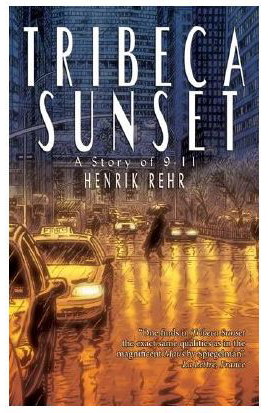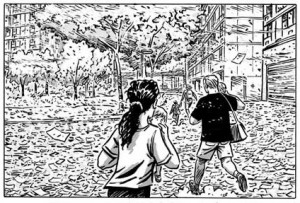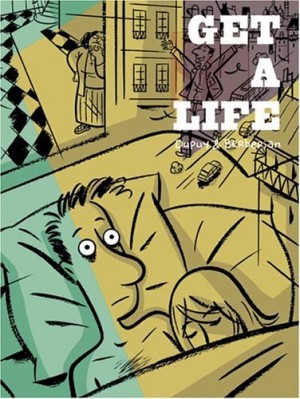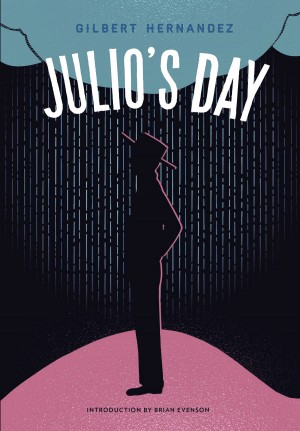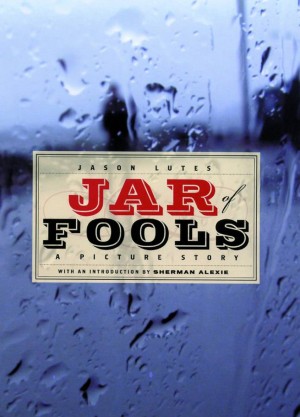Review by Frank Plowright
Tribeca Sunset is two stories connected by the events of 9-11 2001. It opens with an autobiographical account, then switches, rather jarringly, to a fictional group of friends, once art students together, reunited in New York. the tragic events impacted on them.
Henrik Rehr’s first hand experiences of September 11th 2001 are a compelling documentation of what thousands felt and endured. He lived within sight of the World Trade Center, witnessed the initial attack, and saw people falling to their deaths. At home with his infant son, his concerns then turned to his wife and other son, she travelling to work after dropping him at school. Rehr contrasts his sense of foreboding while evacuated with the complications accompanying the birth of his eldest son, and delivers a wealth of small details accumulating the larger picture conveying what people went through. Rehr closes his windows and blinds pre-empting chemical attack, his sleep is difficult due to thoughts of collapsing ceilings, he fantasises about torturing terrorists, and fears the grief his eventual death will cause his son.
The title story is named after a fictional soap opera in which the fiancée of one the characters stars, and may or may not be an allusion to the separation of the main cast. It’s prefaced by the introduction of Neil in a sequence that has the air of autobiography by virtue of Rehr’s presence. It’s a powerful piece in which Neil describes his escalating rage at an exploitative housing agent, and a fate only just avoided. In the light of what follows, though, it confuses as Neil stars, but the work appears to be fiction. Two of Neil’s former art class left New York after 9-11, but they return for the opening of his latest exhibition. Mac is a highly strung, but successful artist, and Craig is a family man who opted to teach. The shadow of their departure and reasons for it hang heavy over the reunion, and the story is punctuated by vox pop responses asking for definitions of art, love, success and failure. It’s an engaging character study revealing the flaws of all, and the initial wastepail is revealed as perhaps the most haunted.
There’s a simplicity and clarity to Rehr’s art, and an honesty to his stories. It’s a great shame it’s taken him a decade to published a second graphic novel.
